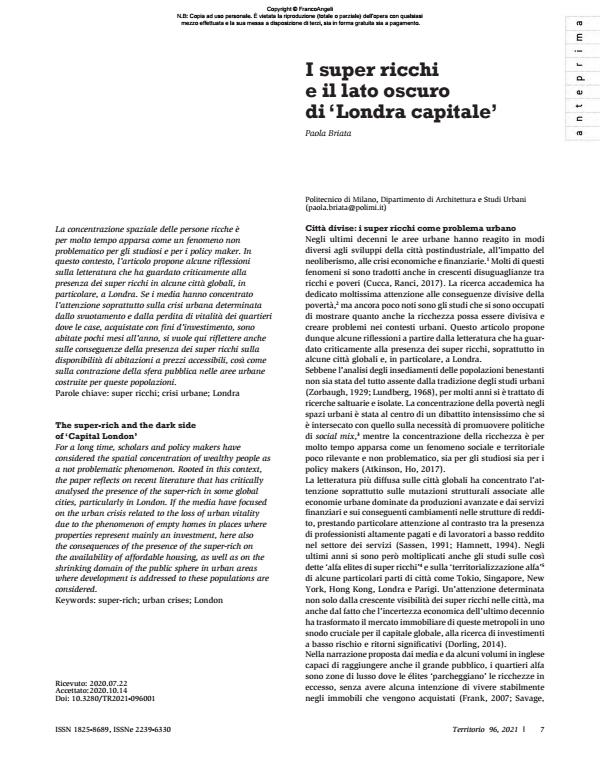The super-rich and the dark side of "Capital London"
Journal title TERRITORIO
Author/s Paola Briata
Publishing Year 2021 Issue 2021/96
Language Italian Pages 11 P. 7-17 File size 1226 KB
DOI 10.3280/TR2021-096001
DOI is like a bar code for intellectual property: to have more infomation
click here
Below, you can see the article first page
If you want to buy this article in PDF format, you can do it, following the instructions to buy download credits

FrancoAngeli is member of Publishers International Linking Association, Inc (PILA), a not-for-profit association which run the CrossRef service enabling links to and from online scholarly content.
For a long time, scholars and policy makers have considered the spatial concentration of wealthy people as a not problematic phenomenon. Rooted in this context, the paper reflects on recent literature that has critically analysed the presence of the super-rich in some global cities, particularly in London. If the media have focused on the urban crisis related to the loss of urban vitality due to the phenomenon of empty homes in places where properties represent mainly an investment, here also the consequences of the presence of the super-rich on the availability of affordable housing, as well as on the shrinking domain of the public sphere in urban areas where development is addressed to these populations are considered.
Keywords: super-rich; urban crises; London
Paola Briata, I super ricchi e il lato oscuro di "Londra capitale" in "TERRITORIO" 96/2021, pp 7-17, DOI: 10.3280/TR2021-096001